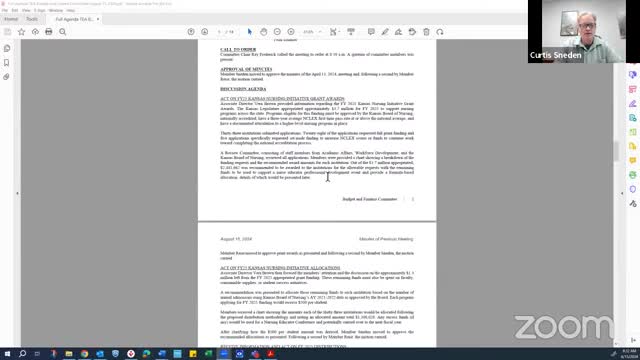Review reveals soaring costs in technical education programs
August 16, 2024 | Board of Regents, Departments, Boards, and Commissions, Organizations, Executive, Kansas
This article was created by AI summarizing key points discussed. AI makes mistakes, so for full details and context, please refer to the video of the full meeting. Please report any errors so we can fix them. Report an error »

During a recent government meeting, officials discussed the findings from a review of extraordinary costs associated with healthcare programs, particularly in the context of technical education. Carmen, a key speaker, outlined the role of extraordinary costs within the instructional cost model, which is designed to identify expenses related to delivering technical education. This model includes four main cost elements: instructor salaries and benefits, institutional support (such as facilities and utilities), instructional support (like student services), and extraordinary costs, which cover specialized tools and equipment necessary for hands-on learning.
Carmen emphasized that extraordinary costs are crucial for distinguishing occupationally specific coursework from general education, highlighting their importance in technical programs. The instructional cost model is updated annually based on institutional data, and it aims to calculate the cost per credit hour for each technical program while determining the state's financial contribution.
The discussion also touched on potential deviations from the standard cost calculations, suggesting that programs training for employment in critical community sectors, such as healthcare and public safety, might warrant special consideration. Other factors for deviation included training for high-demand occupations that require licensure or certification and programs receiving significant state funding.
Committee members debated the merits of adopting a flexible policy approach to these deviations, with some advocating for a clear set of criteria to guide future decisions. The conversation underscored the ongoing challenges institutions face regarding rising costs, particularly in nursing programs, which have remained flat despite increasing expenses.
Overall, the meeting highlighted the need for a nuanced understanding of the financial landscape in technical education and the importance of adapting funding models to meet the evolving demands of the workforce.
Carmen emphasized that extraordinary costs are crucial for distinguishing occupationally specific coursework from general education, highlighting their importance in technical programs. The instructional cost model is updated annually based on institutional data, and it aims to calculate the cost per credit hour for each technical program while determining the state's financial contribution.
The discussion also touched on potential deviations from the standard cost calculations, suggesting that programs training for employment in critical community sectors, such as healthcare and public safety, might warrant special consideration. Other factors for deviation included training for high-demand occupations that require licensure or certification and programs receiving significant state funding.
Committee members debated the merits of adopting a flexible policy approach to these deviations, with some advocating for a clear set of criteria to guide future decisions. The conversation underscored the ongoing challenges institutions face regarding rising costs, particularly in nursing programs, which have remained flat despite increasing expenses.
Overall, the meeting highlighted the need for a nuanced understanding of the financial landscape in technical education and the importance of adapting funding models to meet the evolving demands of the workforce.
View full meeting
This article is based on a recent meeting—watch the full video and explore the complete transcript for deeper insights into the discussion.
View full meeting
